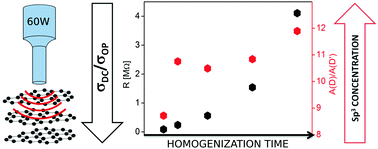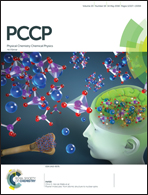Ultrasonication-induced sp3 hybridization defects in Langmuir–Schaefer layers of turbostratic graphene†
Abstract
Ultrasonic homogenization is the method of choice for producing and dispersing graphene. In this paper, we show that sp3 hybridization defects introduced by long high-power sonication cause a significant decrease in electrical conductivity. In order to show this, two turbostratic graphene (TG) dispersions were sonicated at two power settings of the tip sonifier at 20 W and 60 W, and for different periods varying from 1 min to 180 min. Afterwards, TG thin films were prepared by the Langmuir technique and transferred onto a quartz substrate by the Langmuir–Schaefer method. The thin films were investigated by electrical conductivity measurement, UV-VIS, Raman spectroscopy and scanning electron microscopy. We found that the relative performance of the TG thin films in terms of transparency and sheet resistance was higher than that for similarly prepared pristine graphene flakes, reported in our previous work. Moreover, despite the increase in transmittance, the electrical conductance significantly decreases with the time of sonication, especially for the 60 W sonication power. The results of Raman spectroscopy indicate that this particular behavior can be explained by the introduction of sp3 hybridization defects into the TG flakes during high power sonication.



 Please wait while we load your content...
Please wait while we load your content...